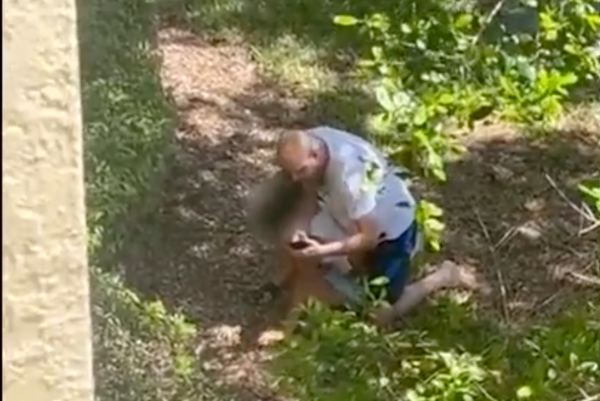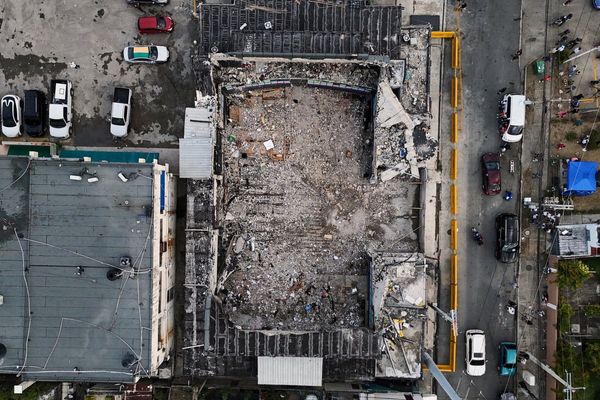For more than a decade, Democratic U.S. Representative Greg Casar, an ex-Austin City Council member now representing a House district that stretches down to San Antonio, has been fighting to protect workers from extreme heat. From 2011 to 2022, the federal Bureau of Labor Statistics reported that 479 workers in the United States died from heat exposure while nearly 34,000 suffered heat-related illnesses or injuries while on the job. But those numbers are likely massive undercounts: The nonprofit Public Citizen has estimated that up to 2,000 deaths and 170,000 injuries occur annually from workplace heat exposure.
As temperatures continue to rise each summer with climate change, some relief may be on the horizon. In July, the Biden administration announced a proposed Occupational Safety and Health Administration (OSHA) rule that aims to protect millions of workers from heat exposure. The rule is long-awaited by the nation’s worker safety advocates and is especially relevant in Texas, which pairs scorching summers with an absence of mandated protections such as regular rest breaks. The Texas Observer spoke with Casar about what workers can expect from the rule and when it will take effect.
“If we can’t get it by next summer, then it sure as hell better be in effect in time for the one after that.”
TO: How will this rule change working conditions for Texans?
Tens of millions of Americans will get new protections that they’ve never had before, including the right to a rest break every two hours whenever the heat index gets up past 90 degrees. This rule will make people’s lives better across industries, from construction to restaurant workers to baggage handlers to landscape workers and everybody in between. Whether you work indoors or outdoors, the rule becomes even more important in an era of climate change, where the summers are coming in earlier, staying for longer, and getting hotter than ever before. Furthermore, the heat rule will also increase the level of fines that the Department of Labor can impose if an employer puts their workers at risk. And finally, it also requires employers to have a plan on acclimating workers to the heat, because when somebody’s brand new on the job and has to work in that really hot warehouse or on that really hot rooftop, there is a significantly greater risk until they’re acclimated.
We’re reaching the end of the hottest part of this summer. Can you explain what stage of the process the rule is in and when workers can expect it to take effect?
We’re in the comment period [as of August 30]. This is a legally required period of time where the public can submit their thoughts on the proposed rule, and the federal government has to read and respond to those comments before putting the rule into effect, and that’s a required process. I’m pushing as hard as I can to get the rule fully enforced by next summer, and if we can’t get it by next summer, then it sure as hell better be in effect in time for the one after that. That still would be multiple times faster than most safety rules ever get put into effect.
Usually, these rules take seven or eight years to get written and to go into effect, giving big corporate lobbyists plenty of time to kill them before then. But with President Biden turning out to be such a labor-friendly president, with the head of the Department of Labor, Julie Su, leading the charge, and thanks to years of advocacy from people, especially folks in Texas, we’re on an accelerated timeline.
Recently, a UPS mail carrier named Chris Begley passed out from heat exhaustion while driving, and crashed. The company insists that they have safety training in place, that they’re allowed the breaks needed to cool down, yet, when the UPS driver had called in for help, he was still asked to continue driving back to the facility. Also, instead of driving him to the hospital, he was driven back to his empty house, and died four days later. Could this rule have saved his life if it were in place?
This UPS driver dying is a tragedy. I hope that all the details get fully investigated and that there’s accountability for what happened to him. … The vast majority of the American public believes that workers should have their safety taken into consideration first, and so with this heat rule in effect, workers would be given the right to pull over and take a break, to go to the gas station and pick up some water, and not be worried about facing retaliation or consequences for taking care of themselves. We hear about this happening all the time: workers not being allowed to come off of a scaffold under the extreme heat; workers not being allowed to come out of the hot kitchen; workers not being able to go off of their driving route to pick up some water. [The federal rule] sets a new norm and baseline for how people can expect to be treated at work.
Last year, Dallas USPS mail carrier Eugene Gates collapsed and later died after delivering mail in 107-degree weather. We had reported how USPS had falsified his heat illness prevention training records, along with that of many others, forced him to speed up at work, gave him a vehicle without air-conditioning, and denied breaks to other employees. You’ve been pressuring USPS to address these issues. What’s been their response?
Last month, we asked USPS privately to implement the heat protections and the heat rule on their own, which postmaster Louis DeJoy could do with the stroke of his pen. They are a separately controlled agency with its own separate board, so it’s really up to the postmaster general to do the right thing here. And what we heard back from USPS is that they didn’t want to provide those heat protections to their workers. They said that they would wait for the rule to be finalized, and I don’t think that that makes any sense. That’s why we took the fight public and made the formal request for USPS to do something about their workers getting sick and dying on the job from the heat. … We’re now asking for a meeting with postmaster DeJoy to ask him why he would choose inaction that could put his own workers in harm’s way over taking the simple steps that the Biden administration is asking employers to do around the country. As you pointed out, Eugene Gates died in Dallas last year, and this summer Wendy Johnson, who was working a shift in a non-air conditioned vehicle in nearly 100-degree temperatures in North Carolina, died. And so it seems like almost every year, whenever a letter carrier dies on the job, that’s something the postmaster general could’ve done something about.
[USPS spokesperson Becky Hernandez told the Observer the agency already has a heat illness prevention program in place and that USPS will “provide substantive comments to OSHA setting forth concerns and recommended changes to the proposed rule.”]
You were involved in passing a rest break ordinance for construction workers in Austin more than a decade ago. Last year, the State of Texas passed the “Death Star” bill to kill ordinances like that. It’s in limbo in the courts, but is the OSHA heat standard basically a way to overrule the Texas Legislature and governor?
When I started out as a labor organizer, I was organizing workers who didn’t have access to water breaks. I unfortunately had to organize a memorial service for a worker’s family member who had died building a highway here in Northeast Austin while working in the sun without breaks. When we passed the Austin ordinance, it was a jubilant day for so many people in the labor movement and on construction sites across the city. And then we fought off, legislative session after legislative session, business interests that wanted to undo that win, and we were able to fight them off for nearly a dozen years. But then the governor did finally sign that “Death Star” bill into law, and that was a tough day. And when you have extremist right-wing officials at lower levels of government, it takes people of conscience at the federal level to finally do the right thing, and President Biden can make sure, and has been making sure, that Greg Abbott can’t just take those rest breaks away and be unaccountable for it.
Even when the federal protections are in place, OSHA is an understaffed agency. What will it take to actually see these protections enforced in industries that rush through jobs in ever-hotter conditions like the Texas construction business?
It’s clear that OSHA needs more staffing, and we’re fighting for that year in and year out. But, you know, I also have a lot of hope in the growing Texas labor movement. There are so many more people organizing in their workplaces today than when I started doing this work 15 years ago. And that’s a really good thing, because if we have more people organized through their unions at their workplaces, then workers will have a lot more power to negotiate for themselves and to defend themselves. OSHA is purposefully underfunded by Republicans so that they can’t do as much as we’d like for them to do. And so yes, there needs to be a much stronger push in the Congress for us to adequately fund the Department of Labor in general. But I’m also really hopeful that we can do a lot of it on our own by building more worker solidarity in the state.
What do you think the impact of this standard will be on business owners in Texas?
We already saw in Austin and in Dallas, for years, that in the vast majority of cases, businesses just start complying with the rules and workers get their breaks. In very few cases is anybody even getting fined. The construction industry has been booming in Austin and in Dallas even while these water break protections are in place, and I expect that they’ll keep on booming. But we want these industries to grow without workers having to suffer through it.
You’ve spent more than a decade on this issue; what’s the next big worker safety issue on your agenda?
I think what needs to really come next is supporting the continued growth of the union movement and the ability for many of these new unions to actually have strong union contracts. The PRO Act was passed by the House last Congress and got stuck in the Senate. If we’re able to recapture the House this coming year, then the PRO Act, or the biggest parts of it that we can get through, [will mean that] all these workers who are newly getting excited about union organizing can actually win the contracts, the raises, and the safety protections that they deserve.
This interview has been edited for length and clarity.







